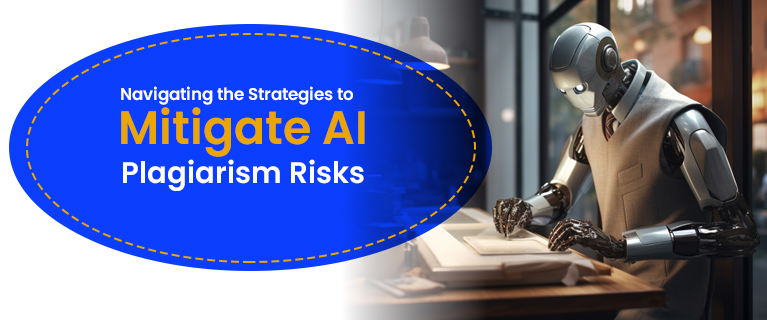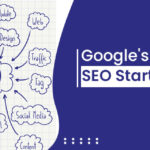In today’s dynamic digital marketing landscape, the advent of artificial intelligence (AI) has ignited both excitement and apprehension among content creators and marketers alike. As AI continues to evolve at a rapid pace, it offers unprecedented opportunities to revolutionize how businesses engage with their audiences. Yet, lurking beneath the surface are concerns regarding the ethical use of AI, particularly its potential to replicate or misuse original content.
Read Also This – Beyond Click-Through Rate in PPC Marketing
The proliferation of AI-driven tools and algorithms has undeniably democratized content creation, enabling marketers to automate tasks, personalize messaging, and optimize campaigns with unprecedented efficiency. From chatbots delivering tailored customer experiences to predictive analytics forecasting consumer behaviour, AI has become an indispensable asset in the marketer’s toolkit.
However, amidst the allure of AI-driven innovations lies a shadow of uncertainty. Content creators grapple with the looming threat of AI-generated content diluting the uniqueness of their brand voice or, worse, outright plagiarizing their intellectual property. The rise of deepfakes, AI-generated images, videos, and text that convincingly mimic real human expression, exacerbates these concerns, raising questions about authenticity and trust in an increasingly digital world.
Read Also This – Digital Marketing Success With A Monthly Newsletter Guide
Furthermore, the democratization of AI means that bad actors also have access to these powerful tools, amplifying the risk of content manipulation, misinformation, and cyberattacks. The potential for AI to propagate false narratives, manipulate public opinion, or even incite unrest underscores the urgent need for robust safeguards and ethical guidelines.
Understanding the Risks:
In navigating this complex landscape, content creators and marketers must strike a delicate balance between harnessing the transformative potential of AI and safeguarding the integrity of their content. Proactive measures such as watermarking original content, implementing digital rights management systems, and regularly monitoring online platforms for unauthorized use can help mitigate the risk of content misuse.
Moreover, fostering a culture of transparency and accountability is paramount. Marketers must be vigilant in disclosing the use of AI-generated content and adhering to ethical standards that prioritize authenticity, consent, and data privacy. By championing ethical AI practices and cultivating trust with their audiences, brands can not only protect their content but also differentiate themselves in a crowded digital marketing landscape.
Read Also This – Google AdMob’s Technical Ad Delivery Solution
In essence, the emergence of AI presents both unprecedented opportunities and daunting challenges for content creators and marketers. By embracing ethical AI practices, implementing robust safeguards, and prioritizing transparency, businesses can navigate this new frontier with confidence, harnessing the power of emerging technologies while safeguarding the integrity of their content and the trust of their audiences.
Before delving into preventive measures, it’s crucial to grasp the multifaceted risks associated with AI “taking” content. From wholesale replication to subtle imitation, AI can compromise various aspects of your work:
1. Entire Work or Multiple Works
Generative AI has the capability to replicate entire pieces of content, ranging from written articles and blog posts to multimedia content like videos and audio recordings. Moreover, advanced AI algorithms can even index and aggregate content from multiple sources, creating comprehensive replicas of websites, social media accounts, or entire digital ecosystems. This poses a significant risk to content creators and marketers as it can lead to the proliferation of duplicate or plagiarized content across the internet, potentially diminishing the visibility and credibility of the original work.
2. Words or Elements
AI-generated content may not always replicate entire pieces verbatim but can instead copy specific elements such as text, images, or video frames. In some cases, AI may make subtle modifications to these elements to avoid detection, deceiving audiences into believing that the content is original. This poses a challenge for content creators as it requires vigilance and advanced detection mechanisms to identify and address instances of content theft or manipulation effectively.
Read Also This – A Comprehensive Guide to Mastering YouTube Advertising
3. Ideas or Style
Beyond replicating specific words or elements, AI can also mimic the broader ideas, style, or format of existing content. This indirect form of plagiarism can dilute the unique voice and brand identity of content creators, making it difficult for audiences to distinguish between original and AI-generated content. Moreover, by adopting similar ideas or aesthetics, AI-generated content may undermine the originality and creativity of the content creator, diminishing their competitive advantage in the marketplace.
4. Marketing Results
The proliferation of AI-generated content can inadvertently compete with and undermine the marketing efforts of content creators and marketers. If AI-generated content gains traction and visibility online, it may divert audience attention away from original content, leading to a loss of audience engagement, diminished trust in the brand, and ultimately decreased conversions. This poses a significant risk to businesses that rely on content marketing as a key driver of brand awareness, customer engagement, and sales growth.
5. Job Security and Budget
The automation capabilities of AI raise concerns about the potential displacement of human roles in content creation and marketing. As AI technologies become increasingly sophisticated, there is a possibility that certain tasks traditionally performed by humans, such as content writing, graphic design, or social media management, could be automated, leading to workforce restructuring and job displacement. This not only impacts job security for individuals but also requires businesses to reassess their budget allocation and investment in human resources versus AI technologies. Balancing the benefits of AI automation with the preservation of human expertise and creativity is essential to navigate this evolving digital marketing landscape responsibly.
Mechanisms of AI Plagiarism:
Understanding how AI can appropriate content is crucial for devising effective preventive strategies. The avenues through which AI may exploit your content include:
1. Training Data
When content is published online, it becomes accessible to AI algorithms that crawl the web to gather data for training models. Your content, whether it’s blog posts, articles, or social media updates, could inadvertently become part of these training datasets. As a result, AI models may learn to replicate your writing style, ideas, and even specific phrases or expressions used in your content. While this can lead to increased efficiency in content generation for AI, it also raises concerns about intellectual property rights and the potential for unauthorized use or misrepresentation of original content.
Read Also This – Google Explains Why Useful Links May Not Be So Important
2. Response Generation
In the realm of AI-powered chatbots, virtual assistants, and automated customer service systems, AI-generated responses to user queries may include excerpts or adaptations of your original content. For example, if a user asks a question that is similar to content you’ve published, the AI may retrieve and incorporate relevant information from your content into its response. While this can enhance the user experience by providing accurate and helpful information, it also blurs the lines between original and AI-generated content, potentially impacting the credibility and ownership of the information being shared.
3. Competing for Marketing Results
AI-generated content has the potential to rival your marketing efforts by influencing search rankings, website traffic, and audience engagement metrics. As AI algorithms become more adept at producing high-quality content, they may begin to compete with human-created content for visibility and engagement online. If AI-generated content consistently outperforms human-created content in terms of search engine optimization (SEO), user engagement, or conversion rates, it could have a significant impact on the effectiveness of your marketing campaigns. This competition for attention and engagement underscores the importance of continuously refining and differentiating your content to maintain a competitive edge in the digital marketplace.
Read Also This – Google Battles Massive Spam Attack Threatening Search Activity
4. Economic Impact
The widespread adoption of AI automation in content creation and marketing has the potential to disrupt traditional job roles and industry dynamics. As AI technologies become increasingly capable of performing tasks that were previously done by humans, there is a risk of job displacement and economic upheaval in sectors reliant on content creation and marketing. This can have profound implications for employment opportunities, income inequality, and the overall structure of the workforce. However, it’s essential to recognize that while AI automation may replace certain tasks, it also creates new opportunities for innovation, specialization, and skill development in emerging fields related to AI development, implementation, and oversight. Balancing the economic impact of AI automation with considerations of equity, access, and job creation remains a complex and ongoing challenge for policymakers, businesses, and society as a whole.
AI vs. Human Plagiarism: A Comparative Analysis
Drawing parallels between AI and human plagiarism elucidates nuanced distinctions in culpability and intent:
Scenario Analysis:
1. Old-school human plagiarism
Conscious and deliberate misappropriation of content with full awareness of its origins and implications.
2. Hiring a ghostwriter with no oversight
Indirect plagiarism facilitated by outsourcing content creation without due diligence or attribution.
3. Generic AI prompt generating plagiarized content
Unintentional plagiarism arising from AI-generated content closely resembling original work, albeit without deliberate intent.
4. A particular AI command to imitate someone’s fashion
Deliberate instruction to AI to emulate the stylistic nuances of existing content, blurring the lines of originality and authorship.
5. Specific AI prompt to paraphrase someone’s ideas
Explicit directive to AI to replicate the substance and essence of existing content, albeit in a rephrased form.
6. Creating a generative AI model based on existing content
Development of AI algorithms to automate content creation, posing ethical dilemmas regarding intellectual property and attribution.
The Ethical Imperative: Combatting AI Plagiarism
Despite the challenges posed by AI, proactive measures can mitigate the risks and preserve the integrity of your content:
Opting Out of AI Scraping:
Prevent your content from being included in AI training datasets by implementing measures such as robots.txt directives or platform-specific settings.
Leveraging Unreplicable Marketing Approaches
Embrace marketing strategies rooted in authenticity, expertise, and human connection to fortify your brand against AI replication.
Emphasizing Human Ingenuity
Harness the unique strengths of human creativity, empathy, and strategic thinking to cultivate enduring competitive advantages in the age of AI.
Read Also This – A Comprehensive Guide to Dominating the Top Social Media Platforms
Conclusion:
While AI plagiarism presents formidable challenges to content creators and marketers, it also underscores the enduring value of human ingenuity and authenticity. By adopting proactive measures and leveraging distinctively human attributes, we can navigate the evolving landscape of AI technology while safeguarding the integrity and efficacy of our content marketing endeavors.



